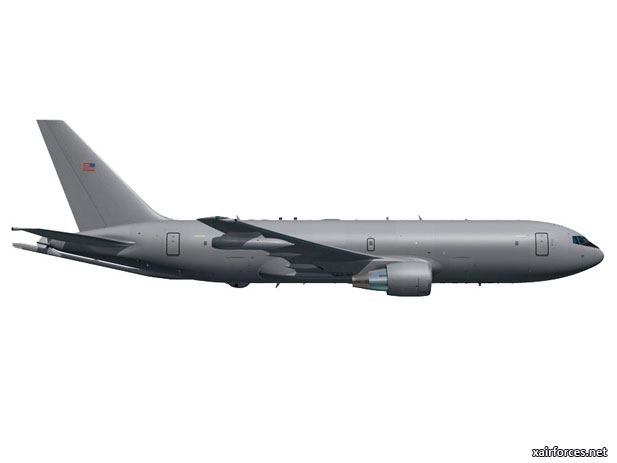
GAO Advises ‘Strong Attention’ to KC-46A Development

The Government Accountability Office (GAO) advises that “prudence and strong management attention” are required during the development phase of the U.S. Air Force’s KC-46A aerial refueling tanker.
In a report to Congress, the GAO repeated concerns expressed last fall that the program faces schedule and technical risks.
The government currently estimates that engineering and manufacturing development (EMD) of the KC-46A will cost $5.3 billion. That is $900 million more than the target cost of the contract when it was placed in February 2011.
The government’s share of any cost overrun is limited by the fixed-price incentive (firm target) contract awarded to Boeing in February 2011 to build four prototype tankers. Under this contract, the government is responsible for 60 percent of the cost beyond the target price, up to a “ceiling” price of $4.9 billion, above which Boeing must pay all additional costs. Boeing’s current estimate of the total EMD cost is $5.16 billion, according to the GAO.
A Boeing spokesman told AIN that the company does not publicly disclose development costs, but stands by its initial estimate. “Boeing remains on-plan to deliver 18 combat-ready tankers by 2017,” the company said.
During the EMD phase, Boeing will develop a new 767-2C derivative of its 767-200ER commercial freighter, modified to include a cargo door, new fuel tanks and flight deck avionics from the 787 Dreamliner. The aircraft, built in Everett, Wash., then will be militarized with the addition of a refueling boom, centerline drogue system with wing refueling pods, a refueling operator’s station and threat-detection and -avoidance system. The original plan was to perform the tanker conversions in Wichita. However, Boeing is closing its plant there and moving the work to the Puget Sound region of Washington state.
The total development and production cost for 179 tankers through 2027 is estimated to be $52 billion. The average procurement unit cost is estimated at $230 million.
The Air Force’s acquisition strategy for the KC-46A provides “a good framework” but “significant concurrency” adds risk, the GAO said. The overlapping of development and production phases has proved a problem for the F-35 Joint Strike Fighter program. The Milestone C decision to begin low-rate initial production (LRIP) of the KC-46A is scheduled for August 2015 and Boeing is expected to deliver 18 aircraft by August 2017. The EMD phase does not end until 2017. Only 60 percent of development flight testing will be completed by the start of LRIP, the GAO said. Maj. Gen. Christopher Bogdan, the Air Force KC-46 program manager, has denied that there is any significant concurrency.
Timely completion of flight-testing, “in-line provisioning” of military modifications on Boeing’s commercial 767 production line, the need for dual 767-2C and military-modification certifications from the FAA and software all pose risks to the KC-46A program schedule, the GAO said.
Source: By Bill Carey - March 30, 2012 (ainonline.com)
Photo: The Government Accountability Office (GAO) cited concurrency of development and production phases as a program risk for the U.S. Air Force’s KC-46A tanker program, based on the Boeing 767-2C freighter derivative. (Courtesy: Boeing)
(30.03.2012)
|